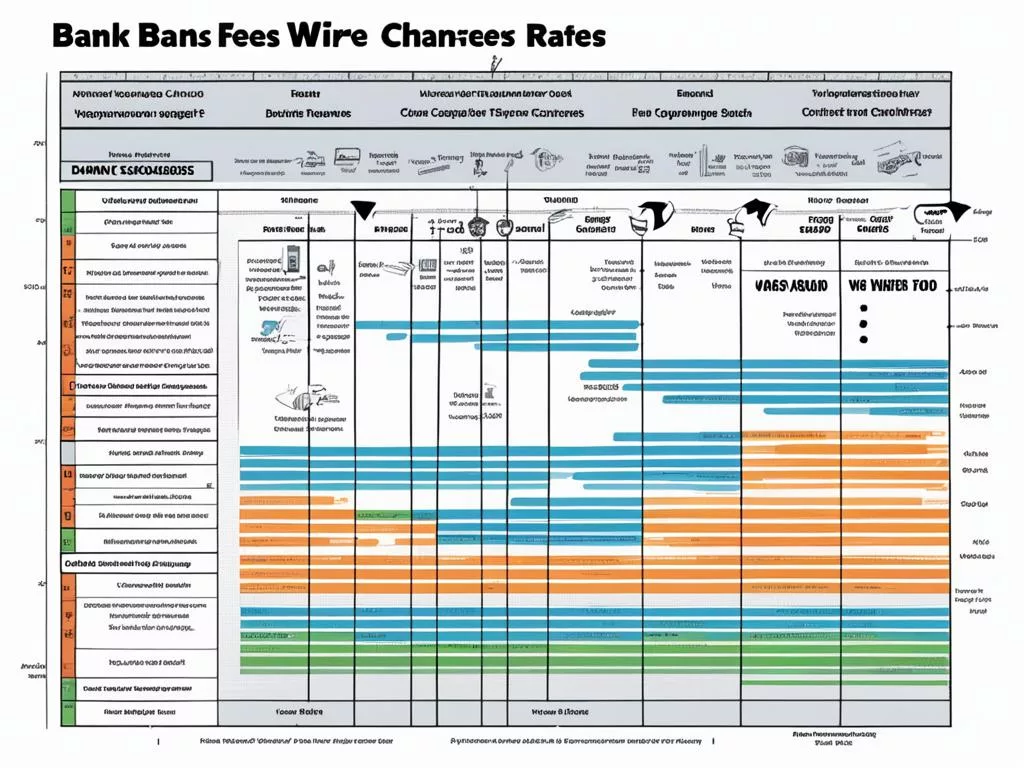Understanding international wire transfer fees is tough. It’s even harder trying to cut down costs for sending money overseas. Using foreign banks for U.S. taxes isn’t smart due to high charges1. It’s important to know that big banks might help better than small ones1. Changes in currency exchange rates also affect how much transfers cost. Knowing banks charge for wire services is key. This influences how much money the receiver gets1. Finding cheaper ways to move money internationally is now more crucial than before.
To send money correctly overseas, use the right IRS account number, 20092900IRS, and RTN/ABA Number, 091036164 US TREAS SINGLE TX. This makes sure tax payments go through smoothly1. Foreign banks can ask the Federal Tax Payment Service for help1. Also needed is the bank’s Routing Transit Number (RTN) or American Banking Association (ABA) number. Sometimes, a form with details from the Same-Day Taxpayer Worksheet is required1. The aim is to manage money smartly and avoid high costs.
Understanding International Wire Transfer Fees
International wire transfer fees can be tricky and costly for those moving money across borders. For outgoing transactions, fees average at $442. This is much higher than services like Wise, which charges about $6.42 for similar transfers3. Companies like Xoom charge a 5 percent fee plus a fixed currency exchange fee3, while MoneyGram offers transfers at roughly $1.99 using a debit card. However, these charges may vary by country3.

Unlike some services, MoneyGram handles transactions up to $10,000, catering to larger transfer needs3. On the other hand, Xoom limits daily transfers between $2,999 and $50,000. This limit depends on the user’s shared personal information3. Remembering these limits is essential when thinking about remittance fees and the cost of transferring money abroad.
Traditional banks also play a part in international wire transfer fees. Incoming international wires usually cost around $15 at banks like Bank of America2. Outgoing wires have median fees near $45, with variations among banks. For instance, Chase charges $40 for U.S. dollar transfers2. Keeping an eye on both sending and receiving fees is crucial. Bank fees and exchange rates can greatly affect the final amount received.
Certain financial accounts offer APY rates between 4.00% and 5.50%, which might offset some fees over time2. The Discover® Money Market Account, with an APY of 4.00%, is another option for savers to see returns2. Yet, it’s important to remember these APY perks don’t cover the immediate costs of wire transfers.
Exploring currency exchange rates and wire transfer fees shows the need for a balance between cost and convenience. Banks offer safety but at a higher price2. Meanwhile, services like Wise and MoneyGram provide competitive fees and better exchange rates3. The trick is to compare these costs and find what best meets your financial needs and habits.
Choosing the Right Service for Overseas Money Transfer Costs
In comparing bank fees for sending money overseas, I found many options that stress the need to cut costs. Using traditional bank transfers usually costs about $44, but opting for companies like Wise lowers fees to around $6.42 depending on the currency3. For those needing higher transfer limits, Xoom allows up to $2,999 daily, but with proper paperwork, you can increase this to $50,0003.
If speed and convenience matter most, Electronic Funds Transfers (EFTs) through places like Fidelity are appealing. They charge no fees and allow up to $250,000 in deposits daily4. Despite possible receiver fees, bank wires ensure funds are available the same day, ideal for urgent, large transfers4. Alternatives like PayPal and Venmo also provide easy ways to move money in and out of accounts4.
Seeking the best method to send money abroad? FX brokers offer more than banks, like better rates and custom services for currency conversion. They can cut hidden costs, saving you from losing an additional 5–7% on poor exchange rates5. What’s more, some online services can transfer money within 1–2 days, with a few offering delivery within the same hour5. For regular overseas payments, an FX broker’s tools offer fixed exchange rates, protecting against currency fluctuations5.
Source Links
- https://www.irs.gov/individuals/international-taxpayers/foreign-electronic-payments
- https://www.nerdwallet.com/article/banking/wire-transfers-what-banks-charge
- https://www.bankrate.com/banking/international-money-transfer/
- https://www.fidelity.com/customer-service/choose-eft-or-bank-wire
- https://www.expatica.com/global/finance/money-management/international-money-transfers-108328/

